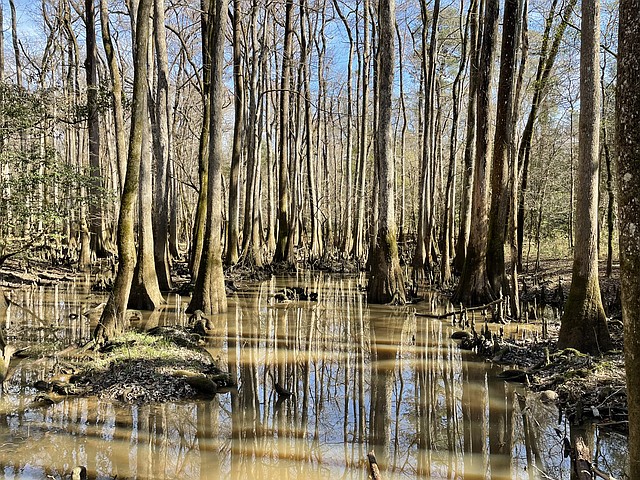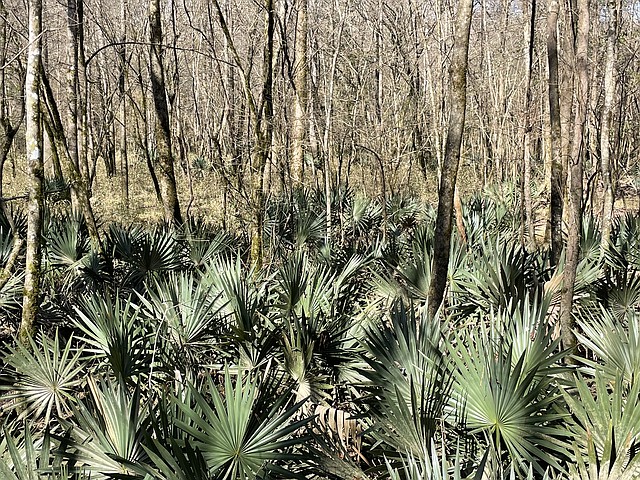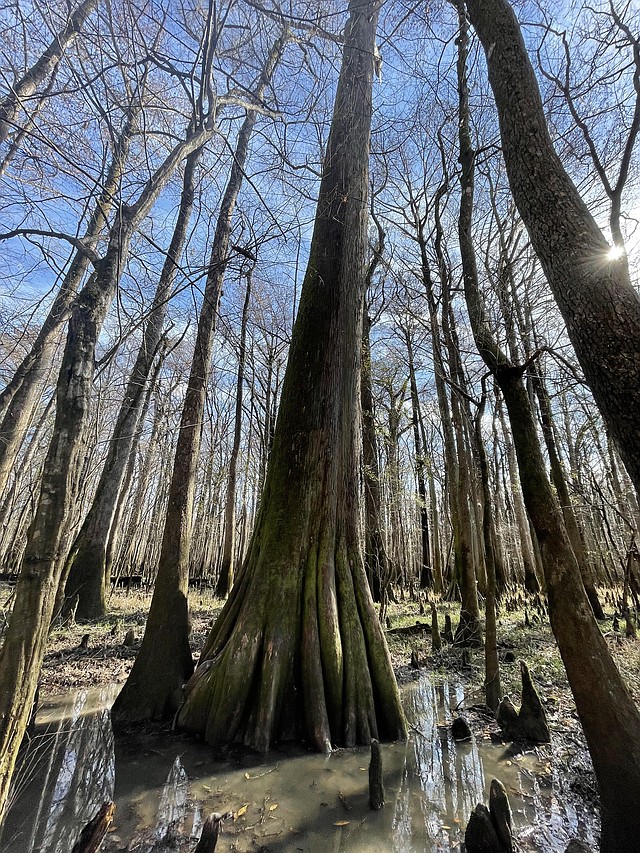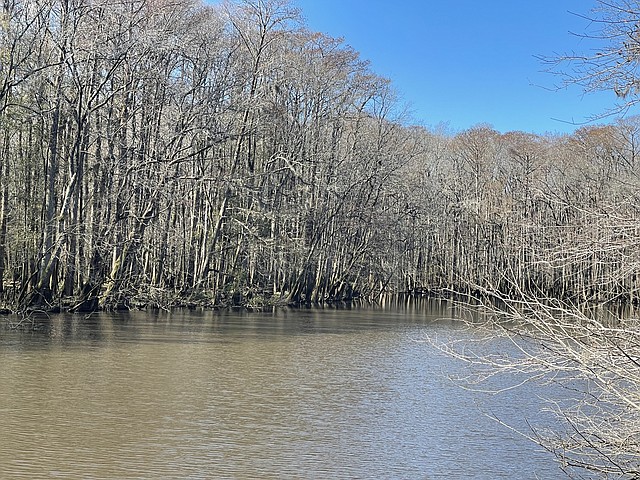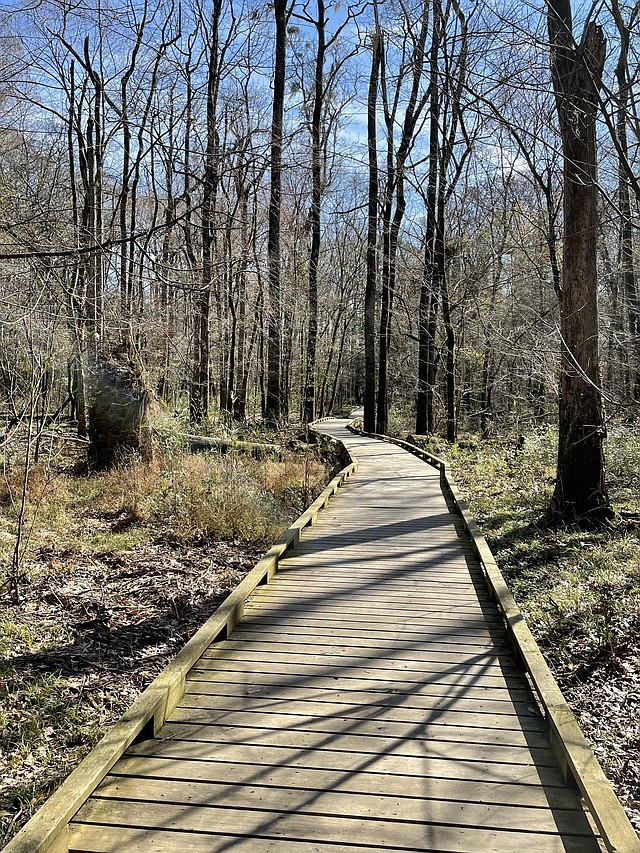Having a National Park pretty much to yourself is a rare experience. Yet, there I was wandering in the swamp among the towering trees of Congaree National Park with nary a soul in sight…with the exception of my husband. It was somewhat eerie, yet peacefully comforting to be amid the serenity of such natural beauty.
Congaree is one of the least visited of our country’s National Parks, with less than 200,000 visitors a year. Compare that to Yellowstone, which sees nearly four million people annually. Located southeast of Columbia, South Carolina’s capital, this hidden gem is a rare old-growth floodplain forest occupying 26,000 acres and adjacent to the Congaree and Wateree Rivers.
The park is fed by floods and these floodwaters are essential, as they bring in minerals and other nutrients to the area’s ecosystem. Congaree supports a surprising variety of life. Because of this, it has been designated an International Biosphere Reserve.
You’ll find all sorts of creatures here, from Pileated Woodpecker, Great Blue Heron and throngs of migrating songbirds to over a thousand species of moths, 140 species of butterflies and countless other insects and reptiles. And then there’s deer, river otter and even the unwelcome feral hog, which has earned a bad rep for destroying native plants and historic sites.
Massive trees take centerstage at the park (81 species in all) and some, like the pawpaw, loblolly pine and sweetgum, are considered “champion trees.” They are the largest of their kind in the state or even the country. I couldn’t stop admiring the majestic bald cypress, with their thick, broad bases and intricate root systems that are responsible for stabilization during a flood. These impressive trees produce “knees” that rise up from the roots and can be seen throughout the forest floor in army minion fashion. Their knobby, stubby appearance makes them look like a sea of gnomes. Researchers surmise that they provide additional support to the cypress.
Bald cypress can live to be over 1,000 years old and average over a dizzying 130 feet in height. Their wood is resistant to rot and water, and was once used for canoes, roof shingles, bridges, furniture and more due to its durability. Logging in the late 1800s depleted this species, which is why so few of these trees are in existence today. It was the continued threat of logging that actually motivated groups to advocate for the protection of Congaree, leading to its designation first as Congaree Swamp National Monument in 1976 and then as Congaree National Park in 2003.
One of the best ways to get a feel for the park is to do the 2.4-mile boardwalk loop. Make sure to grab an interpretive pamphlet to guide you on your walk. Numbers indicate points of interest along the way.
I gained a new lexicon as I ambled down the trail, learning about switch cane, for example, which looks a lot like bamboo, but is more related to sugar cane. And guts and sloughs – low channels that disperse water throughout the floodplain – as well as something called Dorovan muck, a type of very thick mud that serves as a filter to keep the floodplain clean.
I found out that moss on the bottom of the trees indicates the water level from previous floods. Some levels were quite high, and I could only imagine what it would be like to be caught in one of these events.
The park also includes a lake. Weston Lake was created eons ago when the river changed its course, leaving behind this body of water. Though I looked closely, I didn’t spot the snapping turtles that are known to inhabit the lake. But I did see a cottonmouth cruising along with its fat, triangular head raised up high, checking out the “hood.”
South Carolina is known as the Palmetto State, so named after the state tree, the cabbage palmetto. You’ll see plenty of their kin, the dwarf palmetto, beside the boardwalk. They are hardy souls and like wet, sandy locales.
Hurricane Hugo left its mark in the forest, knocking down trees that have been cut and left to display their rings, chronicling a history of forest fires, droughts and extensive rainfall. Lightening also did a number on several of these sentinels, leaving behind scars from its forceful strikes. I read, however, that the damage actually gives beetles and termites opportunities to thrive.
At one of the stops, there’s an iron box in the distance, which I discovered is an old still. Moonshiners sought places in the river’s floodplain to hide their stills and produce their alcohol in relative secret during Prohibition times.
The Congaree River proved additionally useful to escaped slaves from nearby plantations, who sought sanctuary and shelter, even forming independent communities. The vegetation in the forest, with its gnarly roots, offered safety because the terrain was difficult for slave owners and slave catchers to navigate in their pursuit of the escapees.
The human history of the region is notable, with people making their footprints as far back as 9500 BCE. The Congaree, one of the earlier Native American tribes made this place their home. The park and river are named after them. Periods of settlement, wars and slavery transpired over the course of subsequent tumultuous eras, and thus the area is said to be steeped in folk tales and ghost stories.
Though I didn’t spy any apparitions in the park during my visit, I did feel the strong pulse of its ancient and mystical spirit.

